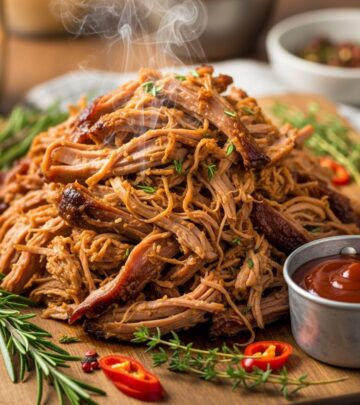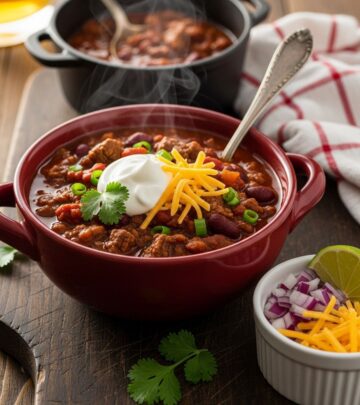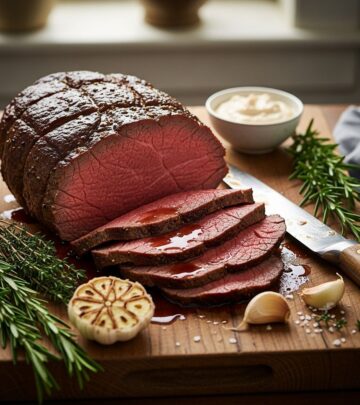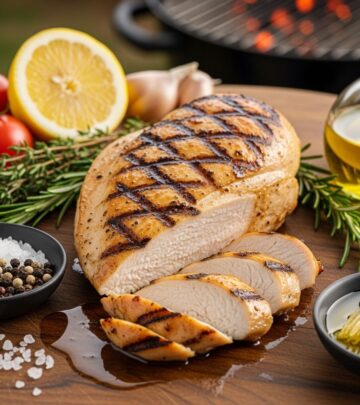15 Smart Pantry Storage Ideas to Organize Any Space
See every item at a glance and enjoy a clutter-free kitchen with purposeful solutions.
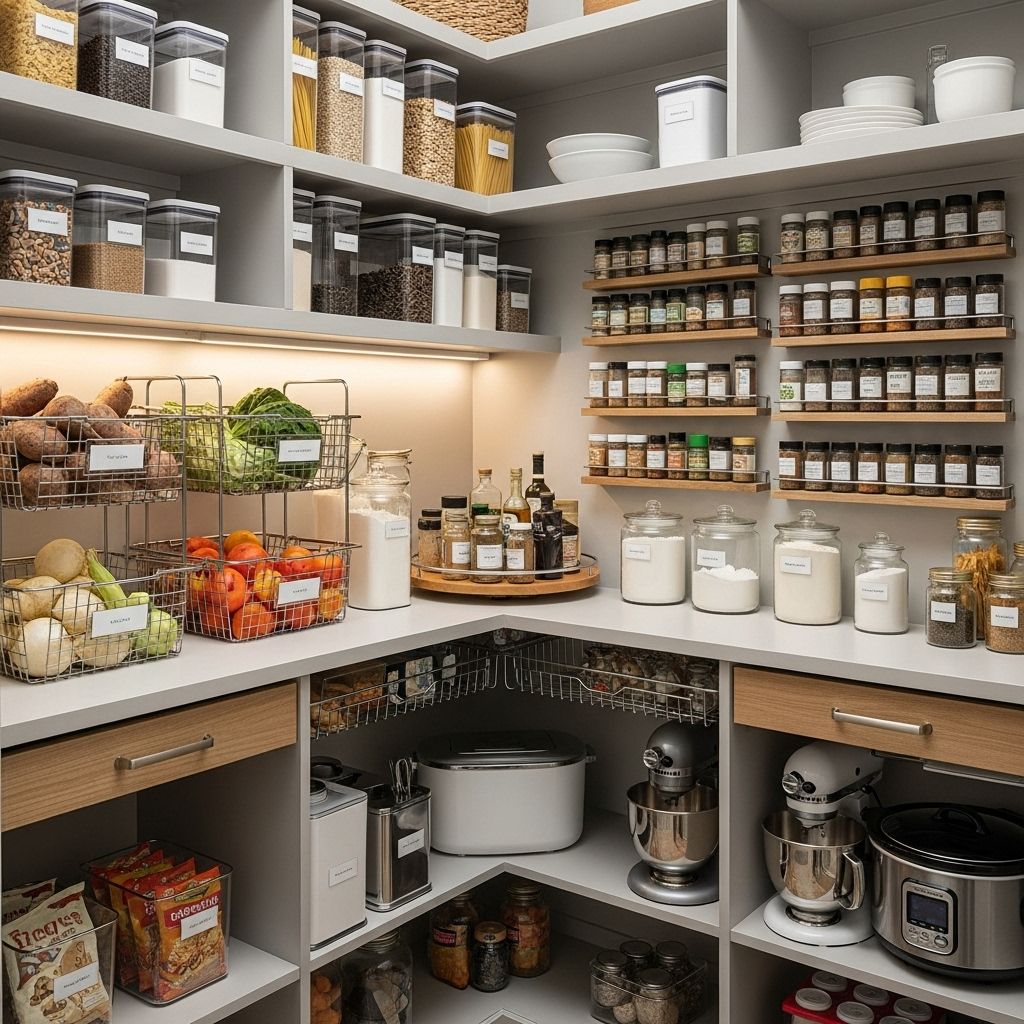
Maintaining an organized pantry is one of the most rewarding ways to streamline your cooking, reduce food waste, and keep your kitchen running efficiently. Whether you have a cavernous walk-in, a small cupboard, or are using reclaimed shelves for storage, a well-organized pantry can elevate your cooking game and your peace of mind. This guide covers 15 smart pantry storage ideas, each designed to address common problems and maximize the utility of your available space.
Why Is Pantry Organization Important?
Your pantry serves as a central station for dry goods, snacks, baking supplies, and sometimes cleaning products or appliances. A cluttered pantry leads to forgotten ingredients, expired products, and daily frustration. With a few clever organizing solutions, you can:
- See what you have at a glance
- Access ingredients quickly
- Prevent food waste by keeping items visible
- Make meal prep easier and faster
- Reduce the stress of a messy kitchen
1. Use Clear Storage Containers to Decant Pantry Staples
Transferring dry goods from original packaging into clear, airtight containers is a classic pantry organization trick. Why? It reduces bulky packaging, keeps ingredients fresher for longer, and lets you see how much you have left at a glance. Consider decanting staples such as flour, sugar, pasta, cereal, rice, and snacks. Choose stackable containers to save space, and label everything for maximum order and clarity.
2. Labels: The Unsung Heroes of Pantry Order
Even the tidiest pantry can spiral into chaos if containers aren’t labeled. Use a label maker, waterproof stickers, or a chalk marker to note what’s inside each bin or jar and (optionally) its purchase or expiration date. Labeling helps everyone in the household find what they need and return items to the right spot, maintaining harmony and order.
3. Add Tiered Shelving for Canned Goods and Jars
Cans and spice jars typically end up hidden in the back, easily forgotten. Tiered shelves (sometimes called “stair organizers”) elevate items at the rear, making everything visible and accessible. Try adjustable or expandable models to fit your shelf width. For smaller pantries, consider corner shelf risers to use every available inch.
4. Embrace Pull-Out Drawers and Sliding Baskets
Deep lower pantry shelves or closets are notorious for swallowing up food items. Installing pull-out drawers, bins, or sliding baskets brings everything into sight—and within arm’s reach. These work beautifully for snacks, baking ingredients, or backstock cans.
5. Maximize Vertical Space with Stackable Racks
Often, there is wasted vertical space between pantry shelves. Stackable racks, shelf risers, and under-shelf baskets can create extra layers, perfect for storing small items, plates, or individually wrapped snacks. This trick is especially game-changing in narrow cabinets or shallow pantries.
6. Try Lazy Susans for Hard-to-Reach Corners
Lazy Susans aren’t just for dining tables. Place a turntable in pantry corners to spin condiments, vinegars, oils, and small jars to the front, eliminating the need to rummage through crowded shelves. Opt for a model with raised edges to keep items from falling off during use.
7. Incorporate Over-the-Door Organizers
Don’t overlook the back of your pantry or cabinet door. Hang a pocket organizer or wire rack to hold spices, small bottles, foil, wraps, or snacks. Over-the-door shoe organizers with clear pockets double as flexible pantry storage for seasoning packets or granola bars.
8. Designate Zones for Pantry Categories
Organize your pantry by creating specific zones for categories like baking supplies, snacks, breakfast items, canned goods, and grains. Grouping similar items together makes finding what you need faster and streamlines restocking. Use baskets or bins to define each section.
9. Utilize Baskets, Bins, and Crates to Corral Loose Items
Pantry shelves are rarely perfectly sized for boxes and bags, leading to spills and clutter. Use deep baskets or sturdy bins to pull together small or loose items. Some popular uses include:
- Packet baskets for sauces, dressings, and seasoning mixes
- Snack bins for bars and snack packs
- Produce baskets for onions, potatoes, and garlic
- Baking bins for chocolate chips, baking soda, and sugars
10. Make the Most of Dead Space with Hooks and Clips
Command hooks, adhesive clips, or mounted racks can hang measuring cups, grocery bags, aprons, or even chip bags. This tactic takes advantage of blank wall spots, cabinet edges, or the sides of shelving, ensuring every inch is working hard for you.
11. Store Bulk Items Separately
If you prefer to buy in bulk, designate a special spot—perhaps on the floor or a lowest shelf—for those oversized bags of rice, flour, or extras. Use airtight containers or lidded bins to keep items fresh and prevent pests. Label each bin clearly to make rotating stock quick and easy.
12. Consider Adjustable Shelving for Ultimate Flexibility
Standard fixed pantry shelves may not suit your specific needs. Adjustable shelving systems allow you to customize the height for each shelf, meaning you can accommodate tall cereal boxes, towering chip bags, or tiny spice bottles as needed. This helps your pantry evolve as your storage needs change.
13. Invest in Drawer Dividers for Small-Item Storage
Drawers are wonderful for deep or lower cabinets, but without dividers, they become jumbles of bags and boxes. Use drawer organizers or grid-style dividers to keep snack packs, tea bags, or soup packets sorted and visible.
14. Keep a Visible Inventory and Meal Planning Board
Sticky notes, chalkboards, or dry-erase boards mounted inside the pantry door can help you stay on top of pantry inventory and meal planning. Write down low-stock items or meal ideas so you’re always a step ahead when shopping or prepping meals.
15. Regularly Re-Assess and Declutter
Pantry organization is ongoing—not a single cleaning session! Every few months, set aside time to:
- Check for expired items and dispose of them
- Refill decanted staples
- Wipe down shelves and bins
- Re-evaluate what is used most (and least)
Continual maintenance helps your pantry stay fresh, functional, and frustration-free.
Bonus: Special Considerations for Small or Odd-Shaped Pantries
- Corner cabinets: Use triangular shelves or lazy Susans.
- Shallow cupboards: Opt for slim, stackable can racks and undershelf baskets.
- No dedicated pantry? Repurpose a bookshelf, rolling cart, or armoire and organize following the same principles.
Table: Quick Reference for Pantry Storage Solutions
| Storage Solution | Best For | Space Type |
|---|---|---|
| Clear Containers | Dry goods, baking staples, snacks | Any size pantry |
| Tiered Shelving | Canned goods, spices, jars | Deep shelves, corners |
| Pull-Out Drawers | Backstock, snacks, baking | Lower shelves, deep cabinets |
| Over-the-Door Rack | Spices, packets, wraps | Pantry doors, cabinet doors |
| Baskets/Bins | Loose packets, produce, snacks | Any shelf |
| Lazy Susan | Bottles, small jars | Corners, high or low shelves |
Frequently Asked Questions (FAQs)
Q: What pantry items should always be stored in airtight containers?
A: Items like flour, sugar, pasta, rice, oats, nuts, cereal, and anything susceptible to pests or staleness stay freshest in airtight containers.
Q: How do I prevent food from getting lost or forgotten in my pantry?
A: Group like items, use clear containers, label everything, and arrange with the oldest products in front so you use them first. Consider a regular inventory sweep and bin system for visibility.
Q: What should I do if I don’t have a walk-in pantry?
A: A single cabinet or set of open shelves can serve as your pantry. Use vertical organizers, under-shelf bins, and drawer dividers. Over-the-door racks and hanging baskets can also help stretch space.
Q: Are glass or plastic containers better for pantry storage?
A: Both work, as long as they’re airtight. Glass is durable, odor-resistant, and microwave-safe; plastic tends to be lighter and stackable. Choose BPA-free plastics and opt for what fits your style and budget.
Q: How do I organize a pantry on a budget?
A: Repurpose jars, baskets, or boxes you have on hand. Dollar stores offer inexpensive labels and bins. Focus on decluttering and arranging by category—it makes a difference even without fancy containers.
Conclusion: Refreshing Your Pantry for Everyday Ease
Every kitchen can benefit from tailored pantry storage solutions. By investing a bit of time in sorting, labeling, and adding smart tools—from clear containers to drawer dividers and lazy Susans—you’ll create a space that keeps your kitchen humming and your stress low. Remember, organization is about making daily life easier, reducing waste, and helping you cook with joy. Happy organizing!
References
Read full bio of medha deb








